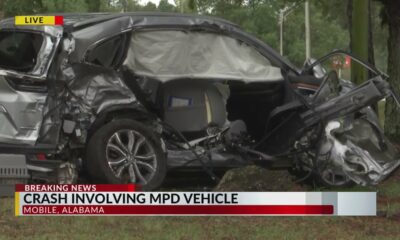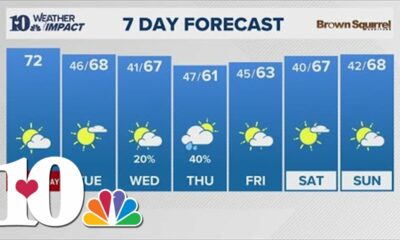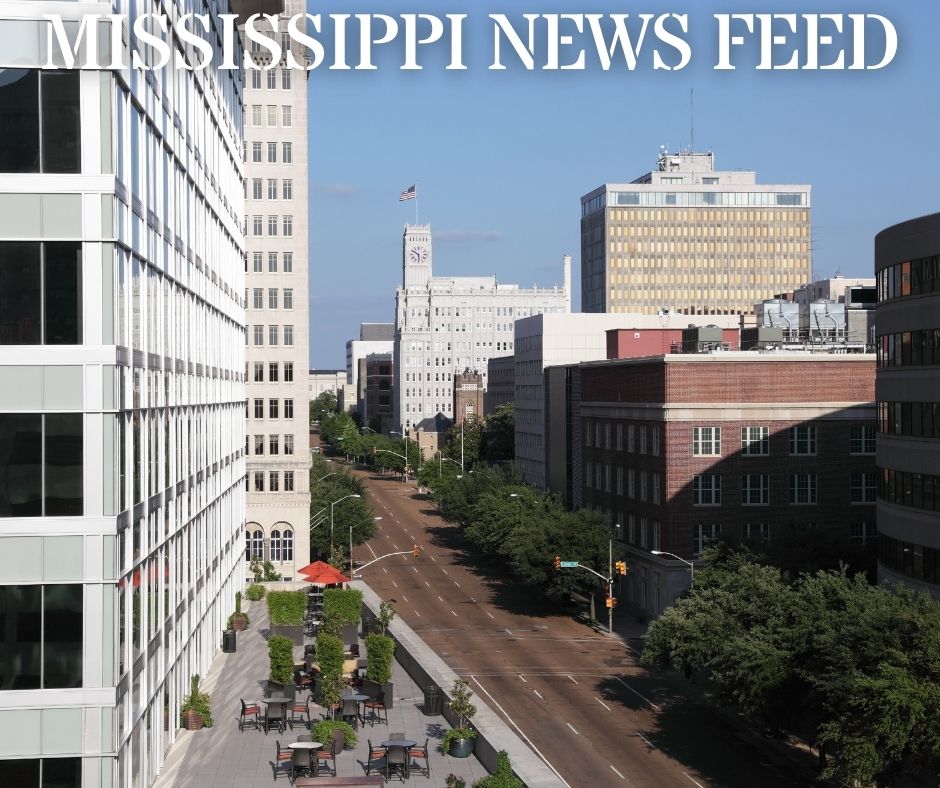Kaiser Health News
‘So Much Death’: Lawmakers Weigh Stricter Speed Limits, Safer Roads for Pedestrians
Vanessa G. Sánchez
Mon, 03 Jun 2024 09:00:00 +0000
LOS ANGELES — The party was winding down. Its young hosts, María Rivas Cruz and her fiancé, Raymond Olivares, had accompanied friends to their car to bid them farewell. As the couple crossed a four-lane main road back to the home they had just bought, Rivas Cruz and Olivares were struck by a car fleeing an illegal street race. The driver was going 70 in a 40-mph zone.
Despite years of pleading for a two-lane road, lower speed limits, safety islands, and more marked crosswalks, residents say the county had done little to address speeding in this unincorporated pocket of southeastern Los Angeles. Since 2012, this half-mile stretch of Avalon Boulevard had logged 396 crashes, injuring 170 and killing three.
Olivares, 27, a civil engineer for the city of Los Angeles, became the fourth fatality when he was hurled across the street, hit by a second car, and instantly killed. Rivas Cruz was transported to a hospital, where she remained in a coma for two weeks. Once awake, the elementary school teacher underwent a series of reconstructive surgeries to repair her arm, jaw, and legs.
In the aftermath of the February 2023 crash, the county installed protective steel posts midway across the street. But residents, who had sought a platformed center divider and speed cameras, said that wasn’t enough.
“It’s just a band-aid on a cut. This is supposed to solve it, but it doesn’t, and that is what hurts,” said Rivas Cruz, who now at age 28 walks with a cane and lives with chronic pain. “I go to sleep, and I’m like, ‘It’s just a dream, it’s just a dream.’ And it’s not.”
The nation’s road system covers 4 million miles and is governed by a patchwork of federal, state, and local jurisdictions that often operate in silos, making systemic change difficult and expensive. But amid the highest number of pedestrians killed in decades, localities are pushing to control how speed limits are set and for more accountability on road design. This spring, New York and Michigan passed laws allowing local jurisdictions to lower speed limits. In Los Angeles, voters approved a measure that forces the city to act on its own safety improvement plan, mandating that the car-loving metropolis redesign streets, add bike lanes, and protect cyclists, transit riders, and pedestrians.
Still, there’s plenty of political resistance to speed enforcement. In California’s Statehouse, Sen. Scott Wiener (D-San Francisco) proposed requiring GPS-equipped smart devices in new cars and trucks to prevent excessive speeding. But after pushback, the state lawmaker watered down his bill to require all vehicles sold in the state starting in 2032 to have only warning systems that alert drivers when they exceed the speed limit by more than 10 mph.
Although the Biden administration is championing Vision Zero — its commitment to zero traffic deaths — and injecting more than $20 billion in funding for transportation safety programs through the Infrastructure Investment and Jobs Act, road safety advocates and some lawmakers argue that the country is still far from making streets and vehicles safe, or slowing drivers down.
“We are not showing the political will to use the proven safety tools that exist,” said Leah Shahum, founder of Vision Zero Network, a nonprofit organization advancing Vision Zero in communities across the country.
Still a Crisis
The need for safer roads took on urgency during the covid pandemic. Fatalities rose even as lockdown mandates emptied streets. In 2022, more than 42,500 people died on American roads, and at least 7,522 pedestrians were fatally struck — the highest tally of pedestrian deaths in more than four decades.
Experts cite several reasons for the decline in road safety. During the lockdowns, reckless driving increased while traffic enforcement declined. SUVs and trucks have become larger and heavier, thus deadlier when they hit a pedestrian. Other factors persist as streets remain wide to accommodate vehicles, and in some states speed limits have gradually increased.
Early estimates of motor vehicle fatalities show a slight decrease from 2022 to 2023, but pedestrian fatalities are still notably above pre-pandemic numbers. “It’s an encouraging start, but the numbers still constitute a crisis,” Transportation Secretary Pete Buttigieg wrote in February of roadway deaths.
The Biden administration has directed $15.6 billion to road safety until 2026 and $5 billion in local grants to prevent roadway deaths and injuries. Under the U.S. Department of Transportation’s new “vulnerable road user” rule, states with 15% or more deaths involving pedestrians, bicyclists, or motorcyclists compared with all road deaths must match federal dollars in their safety improvement spending.
Road safety advocates argue the federal government missed an opportunity to eliminate outdated standards for setting speed limits when it revised traffic guidelines last year. The agency could have eliminated guidance recommending setting speed limits at or below how fast 85% of drivers travel on uncongested roads. Critics contend that what’s known as the 85th percentile rule encourages traffic engineers to set speed limits at levels unsafe for pedestrians.
But the Federal Highway Administration wrote in a statement that while the 85th percentile is the typical method, engineers rarely rely solely on this rule. It also noted that states and some local agencies have their own criteria for setting speed limits.
In response, grassroots efforts to curtail speeding have sprouted across communities. In April, Michigan passed legislation granting local governments authority to round down when setting speed limits.
And after four years of lobbying, New York state passed Sammy’s Law, named after 12-year-old Sammy Cohen Eckstein, who was killed by a driver in Brooklyn in 2013. The law, which will take effect in June, allows New York City to lower its speed limits to 20 mph in designated areas.
“With this legislation, I hope we can learn more children’s names because of their accomplishments, their personalities, and their spirit — not their final moments,” said Sammy’s mother, Amy Cohen.
Push for Pedestrian Safety
Advocates would also like the federal government to factor in pedestrian safety on the five-star vehicle safety rating scale. However, the National Highway Traffic Safety Administration has proposed a separate pass/fail test that would be posted only on the agency’s website, not on labels consumers would see at the dealership.
Automakers like BMW questioned the effectiveness of a program testing pedestrian protections in vehicles arguing that in European countries that adopted such a regulation, it’s not been clear whether it led to fewer deaths and injuries. According to the campaign finance site Open Secrets, automakers spent about $49 million lobbying in 2023 compared with $2.2 million spent by advocates for highway and auto safety.
“The federal government has the biggest punch when it comes to requiring improved vehicle safety design,” said Wiener, the California state lawmaker.
Although Wiener modified his proposal to restrict excessive speeding, he has advanced companion legislation that would require Caltrans, the state transportation agency, to make improvements such as adding crosswalks and curb extensions on state-owned surface streets to better serve pedestrians, cyclists, and transit users.
When that bill was heard in a committee, opponents, including engineering firms and contractors, cautioned it would remove flexibility and hamper the state’s ability to deliver a safe and efficient transportation system. Lawmakers have until Aug. 31 to act on his bills.
In Los Angeles, hope for change arrived in March when voters passed Measure HLA, which requires the city to invest $3.1 billion in road safety over the next decade. Rivas Cruz’s house, however, sits eight blocks outside the jurisdiction of the city initiative.
It’s been more than a year since the crash, but Rivas Cruz finds reminders everywhere: in the mirror, when she looks at the scars left on her face after several surgeries. When she walks on the street that still lacks the infrastructure that would have protected her and Raymond.
Stories of pedestrians killed in this Latino working-class neighborhood are too common, said Rivas Cruz. In September, she attended a memorial of a 14-year-old who was killed by a reckless driver.
“There’s so much death going on,” the Los Angeles Unified School District teacher said from her mother’s living room on a spring afternoon. “The representatives have failed us. Raymond and I were giving back to the community. He was a civil engineer working for the city, and I’m a LAUSD teacher. Where is our help?”
This article was produced by KFF Health News, which publishes California Healthline, an editorially independent service of the California Health Care Foundation.
——————————
By: Vanessa G. Sánchez
Title: ‘So Much Death’: Lawmakers Weigh Stricter Speed Limits, Safer Roads for Pedestrians
Sourced From: kffhealthnews.org/news/article/pedestrian-deaths-speed-limits-road-design-safety-laws-los-angeles/
Published Date: Mon, 03 Jun 2024 09:00:00 +0000
Did you miss our previous article…
https://www.biloxinewsevents.com/readers-issue-rx-for-clogged-ers-and-outrageous-out-of-pocket-costs/
Kaiser Health News
Pay First, Deliver Later: Some Women Are Being Asked To Prepay for Their Baby
SUMMARY: Kathleen Clark faced an unexpected $960 prepayment request from her OB-GYN during her pregnancy, a practice increasingly reported by pregnant women. Often, these upfront fees occur before the pregnancy concludes, creating financial strain and anxiety. Advocacy groups criticize this as unethical, arguing it can deter women from seeking necessary care. Although providers claim prepayments ensure compensation, the approach complicates billing and may force unwanted decisions on patients. With U.S. maternity care costs averaging nearly $3,000 out-of-pocket, many families struggle financially, raising concerns about equitable access to prenatal services. The issue remains challenging to regulate due to industry lobbying.
The post Pay First, Deliver Later: Some Women Are Being Asked To Prepay for Their Baby appeared first on kffhealthnews.org
Kaiser Health News
As California Taps Pandemic Stockpile for Bird Flu, Officials Keep Close Eye on Spending
SUMMARY: California is using state and federal stockpiles to provide up to 10,000 farmworkers with safety gear as the state reports 21 human cases of bird flu. The state began distributing protective equipment in May and has confirmed bird flu at over 270 dairies. Drawing lessons from the COVID-19 pandemic, California is improving emergency responses and maintaining a stockpile that includes millions of face masks. However, due to financial constraints, funding for disaster supplies has been cut, and some preparedness programs were reduced or eliminated. A ballot measure to increase pandemic preparedness funding failed after its key financial supporter was convicted.
The post As California Taps Pandemic Stockpile for Bird Flu, Officials Keep Close Eye on Spending appeared first on kffhealthnews.org
Kaiser Health News
After Congress Ended Extra Cash Aid for Families, Communities Tackle Child Poverty Alone
SUMMARY: Dr. Mona Hanna, a pediatrician in Flint, Michigan, is championing the Rx Kids program, a pioneering cash aid initiative that provides $1,500 mid-pregnancy and $500 monthly for a child’s first year to Flint families. Since its January launch, nearly all babies born in Flint are enrolled, aiding parents with essential needs like diapers and food. While Rx Kids aims to reduce poverty and inspire lawmakers and donors, challenges remain for expansion in underserved regions like Michigan’s Upper Peninsula, where substantial private funding is needed. Ongoing efforts seek to raise awareness and secure resources for this impactful program.
The post After Congress Ended Extra Cash Aid for Families, Communities Tackle Child Poverty Alone appeared first on kffhealthnews.org
-

 News from the South - Alabama News Feed6 days ago
News from the South - Alabama News Feed6 days agoCrash involving MPD vehicle
-

 News from the South - Missouri News Feed5 days ago
News from the South - Missouri News Feed5 days agoVeterans honored across Missouri, Illinois for Veterans day
-

 Our Mississippi Home2 days ago
Our Mississippi Home2 days agoCreate Art from Molten Metal: Southern Miss Sculpture to Host Annual Interactive Iron Pour
-

 News from the South - Georgia News Feed5 days ago
News from the South - Georgia News Feed5 days agoWho will serve in Trump’s cabinet? | FOX 5 News
-

 News from the South - Tennessee News Feed6 days ago
News from the South - Tennessee News Feed6 days agoAfternoon Weather (11/11): Dry afternoon ahead
-

 News from the South - Florida News Feed3 days ago
News from the South - Florida News Feed3 days agoTrump taps Matt Gaetz as attorney general, Tulsi Gabbard as Intelligence official | National
-

 Mississippi News Video6 days ago
Mississippi News Video6 days agoGroup continues annual free Thanksgiving meal in West Point
-

 Mississippi News Video5 days ago
Mississippi News Video5 days agoThe War Memorial Building in Jackson























